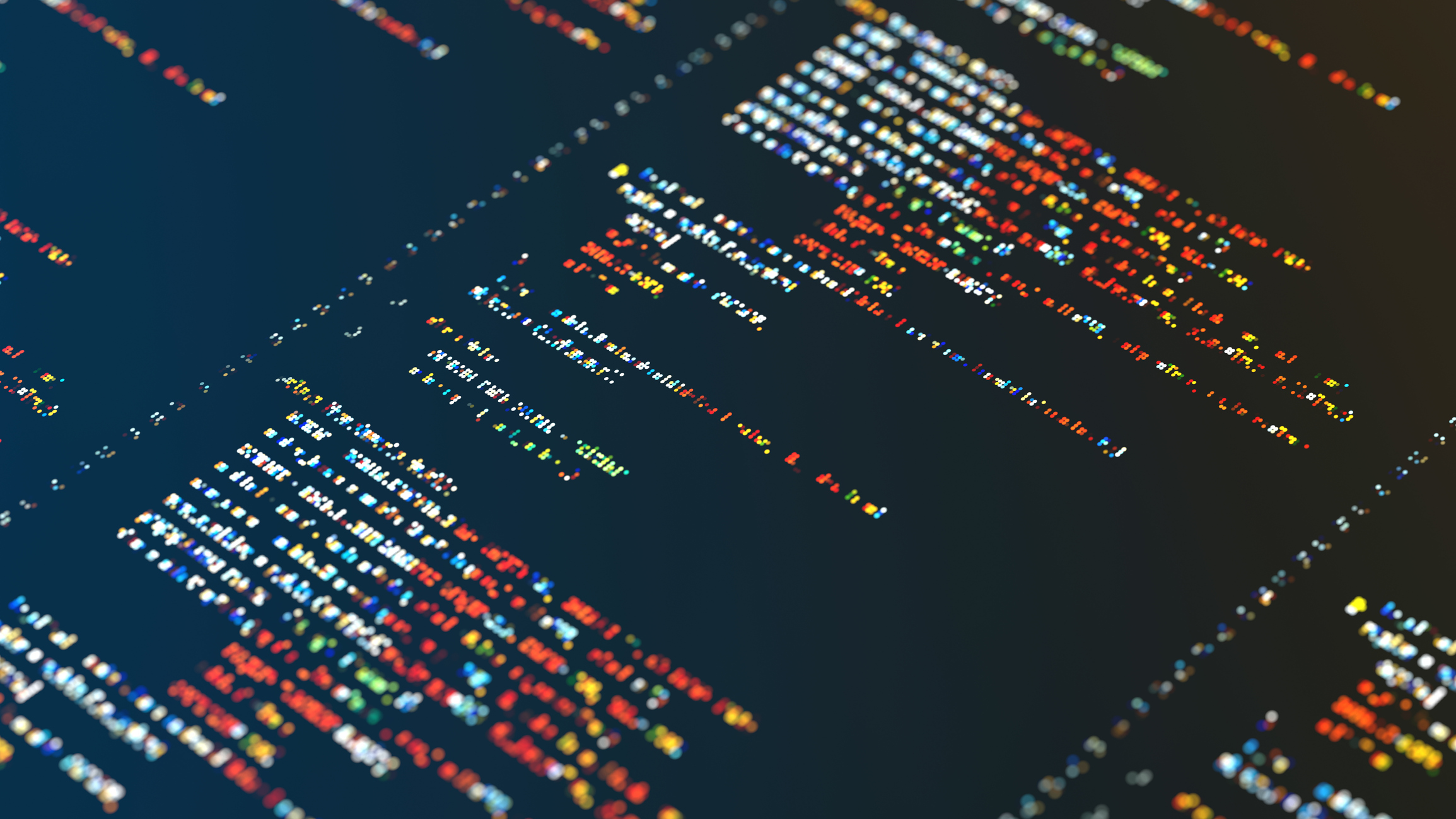What is pseudocode?
We take a closer look at the descriptive take on programming languages


Pseudocode is a technique in computer science that is used to describe the various stages of an algorithm in a way that is easily understood by a human. Pseudocode typically follows the structures of a programming language, but presents the information in a way that is significantly easier to follow for a person unfamiliar with the code.
Whether you’re a professional developer, hobbyist, total novice, or just someone who has hit F12 in a web browser, we’ve all seen pages full of code. For the uninitiated, however, high-level languages complete with unique types, keywords, syntaxes and more, can be difficult to decipher.
Pseudocode aims to bridge the gap between code and plain English, allowing developers to explain more clearly to non-developers what a specific feature or algorithm achieves in an application.
The code written by developers is meant to be readable by machines, not humans. Machines are far better equipped to read endless parentheses, curly brackets, and pipes than we are; we're simply too used to the comparatively inefficient letters, words, and symbols.
Pseudocode strikes a balance between the two, explaining complex computer science concepts to those who don’t have a deep understanding of programming.
Why is pseudocode code used?

Pseudocode keeps some aspects of the language intact in its representation; if you were explaining how to create a loop in pseudocode, you may still use the ‘for’ keyword but you may choose to omit ‘var’ and ‘let’ keywords to describe variables and constants. Common syntax seen in popular programming languages can also go out the window; instead of assigning values to properties with ‘=’, you may simply use an arrow to show which value belongs to which property in code.
Just in the same way we humans use our native languages differently to accommodate different audiences and purposes, writers of pseudocode can get creative with how they represent complex structures in a way that’s more familiar to other people. There is no strict style or syntax for pseudocode, it’s all about translating machine code for humans in the clearest way possible.
Get the ITPro daily newsletter
Sign up today and you will receive a free copy of our Future Focus 2025 report - the leading guidance on AI, cybersecurity and other IT challenges as per 700+ senior executives
RELATED RESOURCE

This form of coding is often used to map out or pre-plan how a programme will work before then translating it into a real language. It's another way of planning, in that it could replace a series of flowcharts and unified modelling language charts that show how an algorithm or system works, as well as its key aims. This is especially useful for people who'd ideally want to ensure the core code is foolproof, and that whatever it is eventually translated into has a fixed point of reference in relatively plain English.
Pseudocode can also help to spot any potential flaws in the code before an app or algorithm is written out in full, which lends itself to a far more efficient process in the longer-term. When it comes to patching any errors in future, for example, the process could be much smoother.
Beyond the practical benefits of pseudocode, programmers often use pseudocode as a point of reference to translate a piece of code from one language to another, as it documents the underlying functions and aims of a programme; almost like a translatory aid. But it can also be helpful to add any additional functions, in terms of visualising where these may fit into the overall programme.
So where are you likely to see it? Pseudocode is often found in scientific publications or textbooks where it can be used to help outline specifically how certain algorithms can be deployed in certain tasks and use cases. Overall it's useful for straightening out how a function would work for any users who aren't necessarily versed in a particular language they're working with at any given time.
Examples of pseudocode
As we've already mentioned, it's important to remember that pseudocode can't be fed into a computer, and is therefore only designed for other people to read. Below we've included an example of how we can potentially use pseudocode to write the 'FizzBuzz' sequence alongside how it's written in Python.
Python:
n = int (input ("input message"))
for num in range (1, n+1):
if num % 3 == 0 and num % 5 == 0:
print ("FizzBuzz")
elif num % 3 == 0:
print ("Fizz")
elif num % 5 == 0:
print ("Buzz")
else:
print(num)
Possible pseudocode for the solution:
- Start
- Take 'num' as input from the user
- Initialize num as 1
- Run loop num till N+1
- If num % 3 == 0 and num % 5 == 0 then print "FizzBuzz"
- Elif num % 3 == 0 then print "Fizz"
- Elif num % 5 == 0 then print "Buzz"
- Else print num
- End
In all cases, programmers advise that you use proper naming conventions, that you use indentation and white spaces, and that you keep it simple and concise. You shouldn't, on the flip side, make it too abstract or too generalised.
Bobby Hellard is ITPro's Reviews Editor and has worked on CloudPro and ChannelPro since 2018. In his time at ITPro, Bobby has covered stories for all the major technology companies, such as Apple, Microsoft, Amazon and Facebook, and regularly attends industry-leading events such as AWS Re:Invent and Google Cloud Next.
Bobby mainly covers hardware reviews, but you will also recognize him as the face of many of our video reviews of laptops and smartphones.
-
 Why keeping track of AI assistants can be a tricky business
Why keeping track of AI assistants can be a tricky businessColumn Making the most of AI assistants means understanding what they can do – and what the workforce wants from them
By Stephen Pritchard
-
 Nvidia braces for a $5.5 billion hit as tariffs reach the semiconductor industry
Nvidia braces for a $5.5 billion hit as tariffs reach the semiconductor industryNews The chipmaker says its H20 chips need a special license as its share price plummets
By Bobby Hellard
-
 Oracle Java pricing concerns could spark a developer exodus
Oracle Java pricing concerns could spark a developer exodusNews Oracle Java users have raised concerns over pricing, with many considering switching to open source options.
By Solomon Klappholz
-
 Python just brushed past JavaScript to become the most popular programming language on GitHub – and a key factor is that AI developers love it
Python just brushed past JavaScript to become the most popular programming language on GitHub – and a key factor is that AI developers love itNews The meteoric rise of Python shows no sign of stopping
By Nicole Kobie
-
 JupyterLab review: A powerful tool for documenting your data science journey
JupyterLab review: A powerful tool for documenting your data science journeyReviews Literate programming toolkit takes dynamic code documents to new heights
By Danny Bradbury
-
 Microsoft continues its Rust mission with new kernel features
Microsoft continues its Rust mission with new kernel featuresNews The latest critical feature comes as a "small trial" to select Windows Insiders
By Connor Jones
-
 Report: Regulatory and monetary incentives needed to adopt safer programming languages
Report: Regulatory and monetary incentives needed to adopt safer programming languagesNews Companies have been urged to create plans on how they intend to get rid of memory-unsafe code in their products
By Zach Marzouk
-
 Microsoft Azure CTO hails 'most loved' Rust as the successor to C and C++
Microsoft Azure CTO hails 'most loved' Rust as the successor to C and C++News Rust is a newer programming language that developers enjoy using and learning, and it's being adopted far across the industry, too
By Connor Jones
-
 Programming with Python: Time to upgrade to fancy ANSI
Programming with Python: Time to upgrade to fancy ANSIOpinion Wordle inspires Dick to reinvent his 1980s ASCII toolkit for the 2020s, but this time he doubles down with ANSI
By Dick Pountain
-
 The best Python test frameworks
The best Python test frameworksBest Make your Python code shine with these testing tools
By Danny Bradbury